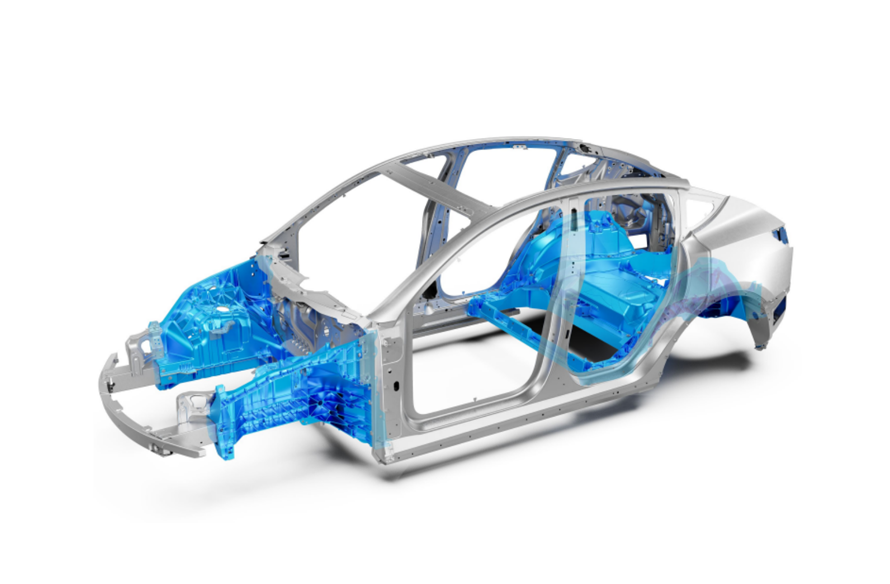The goal of creating a circular, more sustainable economy is driving significant changes in automotive manufacturing methods. Innovative casting technology is being used to make lighter vehicles, with fewer components and specifically tailored allots.
The giga casting process has been developed as a response to the need reduce component part count to make lighter, cheaper vehicles. As a result, larger, structural body-in-white parts can be cast in one piece. Lightweighting of automotive components has been a goal of many manufacturers, and this has been driven by both regulatory and sustainability agendas.
'The need for increased sustainability in automotive manufacturing is driving casting innovation. Sand casting is playing a vital role in prototyping giga castings.'
EV manufacturing is driving giga casting production
Through significant part count reduction, giga casting provides a route to lighter structural parts and the potential for more efficient vehicles. EV manufacturers are investing heavily in giga casting as a production method.
This increased interest in giga casting is being driven by not only lightweighting considerations but also economic factors. By casting structural parts in a single piece, it is possible to remove multiple steps in the manufacturing process – reducing costs of a vehicle effectively. This has the potential to increase the mass adoption of electric and low emission vehicles.
Giga castings: a new agenda in automotive manufacturing
Giga castings are the consolidation of what has been traditionally extruded, stamped or cast metal into a single front end or rear end body structure. This allows automotive manufacturers to create large cast parts, or 'giga castings' in a single net piece.
To put this into perspective, the Tesla Model 3 required over 170 different pieces of sheet metal and over 1600 welds. In comparison, the Model Y replaces these parts with just a front and rear giga-casting, significantly reducing part count.
As well as lighter, faster vehicles, giga casting also offers potential benefits for logistics and emissions reduction, as well as increased flexibility in engineering the vehicle platform design.
What is the impact of giga casting?
Giga casting creates vehicles (and supply chains) that are less complicated, more cost effective, more sustainable and faster to produce.
Giga casting offers huge opportunities to approach automotive manufacturing differently. It’s creating a paradigm shift, and while there are challenges with the process due to the size of castings involved, the impact will be seen across supply chains, manufacturers and the final consumer product.
Giga casting is considered one of the most significant advances in body structure, strategy and technology for several generations. Development of manufacturing equipment and processes has enabled giga casting to become a mainstream automotive commodity.
What are the benefits of giga casting?
The ability to cast large, single net structures has huge benefits for automotive production, creating exciting opportunities to fundamentally shift manufacturing.
These include:
- Reduced complexity in the vehicle structure reduces cost and production time
- Extended use of aluminium contributes towards lighter vehicle architectures. Aluminium mega castings are more sustainable, increasing the use of scrap aluminium.
- Giga castings offer benefits as an architectural strategy. The nature of giga castings mean commitment to a design that will last a lifetime over production. While this does limit flexibility and the potential for design changes, this does drive vertical integration back into the supply chain.
Where does sand casting fit in the giga casting process?
Giga casting is a relatively new technology within the automotive sector. Consequently, there is a need to prototype these large castings due to the significant investment required to bring giga casting into a manufacturing process- and sand casting is playing a vital role in the prototyping of giga casting.
Sand casting creates cost-effective, highly accurate 'Make Like Production' prototypes with the speed, alloy behaviour and accuracy required by leading vehicle manufacturers. Sand casting also provides proof of concept, validates performance, design, safety and material properties prior to mass production.
Read more: How does sand casting support giga casting prototypes?
Watch more: Will the automotive industry adopt giga casting?
To wrap up
Giga castings are fundamentally changing how automotive manufacturers design and manufacture vehicles. Significant investment into the giga casting process is reducing cost and production time, as well as shifting automotive architectural strategy.
To find out more about giga casting, and the role of sand casting in the process, download our free eBook 'Prototyping Giga Castings with Sand Casting'.


 Get in touch
Get in touch
